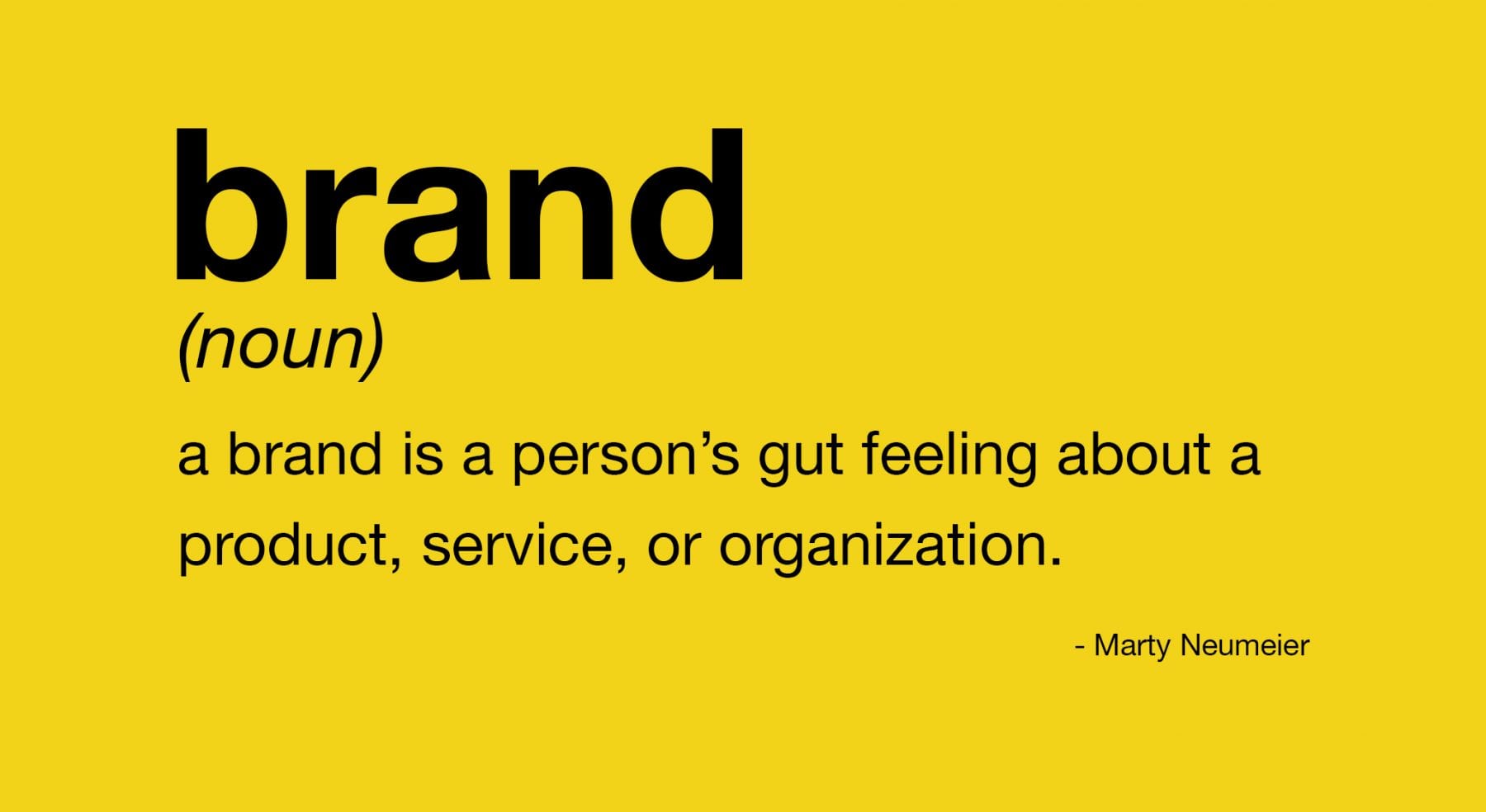image source
Brand Identity is one of the most important aspects of marketing that distinguishes one brand from another. Brand identities have played an important role in the success of some of the biggest brands in the world, such as Coca-Cola (typography and bottle shape), Lego (youthful and creative brand personality), Nike (winning brand personality), etc.
Gaining knowledge on brand identity and creating a strong brand identity value is a sure way to gain success and customer loyalty in the long run. Despite the great importance of brand identity, it is often a confusing term that not many people are aware of.
What Is A Brand Identity?
Brand identity is often confused with other marketing terms such as brand or branding.
A brand is what a customer feels about a business through its interactions. Branding can influence the way a customer feels via different strategies and methods.
Branding is the process that helps customers compare one brand with another while figuring out what is unique between the two and choosing to feel loyal towards one brand over the other.
The brand identity is a visual, tangible element of a brand such as a logo, color palette, website, how communication is done, the tone of voice, brochures, advertisements, etc.
Why Is Having A Unique Brand Identity So Important?
The brand identity is one of the most integral parts of branding to influence any customer that comes in touchpoint with the brand. With so many different brands and companies flooding the market with similar products, the competition to stand out and get a customer’s attention is very high. How you interact with customers influences how they feel about it.
Brand identity also helps customers feel relatable to brands that share the same values. The concepts of your advertisement and the way your brand identity is portrayed attract people with similar morals and values to it.
For example, Mcdonald’s has a very youthful and bright brand identity. It also projects an identity of being budget-friendly. So customers who want to have meals with many friends or colleagues usually gravitate towards Mcdonald’s. Most of these customers were young crowds who wanted a quick meal.
Image Source
How To Build A Brand Identity For Your Startup?
With such great importance placed upon the brand, it is mandatory to know the various ways by which you can build a brand identity for your startup from scratch. The following are some of the strategies you can employ to create a unique brand identity that differentiates your brand from another:
1. Define Your USP
USP or Unique Selling Point is a product or service that makes your brand unique and different from any other product or service in the same industry. If you do not have a USP, customers would not have a unique reason to choose your brand over another.
2. Create Customer Personas
Customer personas characterize customers based on their demographics, psychographics, shopper behavior (how much they shop, what products they buy when they buy), etc. All these data are used to create a target audience like a real person. This helps create marketing messages and strategies that connect better with the customers.
Assaf Cohen, who runs gaming company Solitaire Bliss, suggests talking to dozens of people when developing your customer personas. “We interviewed 50 people who played casual games to understand who they were and why they played. We learned our customers better and what resonated with them to play our games.”
3. Define Target Audience
Target audiences are the people or group of your brand’s potential customers for whom the advertisement messages are targeted. Segment your target audience into geographic, demographic, psychographic, and behavioral groups, and study the likes and dislikes and how the customers feel and think. A well-defined target audience will help you reach customers faster than making everyone your customer.
4. Develop Unique Brand Personality
Brand personality combines unique characteristics and qualities that make the brand recognizable and attractive. It influences the way people view and interact with the brand.
The first step in developing a unique brand personality is choosing the core values, priorities, specialties of your business. Based on these values and customer persona, create a unique voice by which you communicate with your customers.
One of the most iconic branding campaigns was Apple’s Think Different campaign. This campaign played an important role in turning around Apple’s market value, which fell to 3% in 1997. The campaigns used iconic ads that featured famous personalities who were bold, creative, and made a difference to the world. Apple created a unique brand identity and inspired people to be different and creative thinkers with these images.
Image Source
5. Develop Branding Elements
Branding elements are those parts or elements of brand identity that help make a brand different from another. These elements form the visual representation of a brand across different channels of communications such as social media or email programs. Developing an attractive brand identity depends upon the individual branding elements. So choose the more likely elements to attract and relate to your target audience.
McDonald’s is one brand that has so many brand elements that makes it unique. A famous brand element of McDonald’s is Ronald McDonald, the iconic clown with red hair and yellow clothes. The clown has been serving as McDonald’s mascot, attracting kids of all ages. The brand element has been so ingrained that anybody can recognize the character.

6. Develop Your Brand Value
People are all from different cultures, religions, places, beliefs, values, and behaviors. Despite all the differences, they tend to gravitate towards others that share the same values and thought processes.
Similarly, people tend to gravitate towards brands that share the same values. Core brand values help the brand make informed decisions based on these values. Ensure that the brand value you develop is relatable to your potential target audience.
Nike’s co-founder, Bill Bowerman, released its mission statement that changed the way people saw the brand and associated it. “If you have a body, you’re an athlete.” Nike’s quote had a great influence on consumer buying behavior. Earlier, Nike was associated only with professional athletes, which limited the target audience. This quote increased the potential customers and made Nike a household name with this quote.
7. Develop Your Brand Voice And Tone Of Voice
The brand voice and tone of voice represent how your brand interacts and communicates with your customer. It includes the kind of words used in your content, the communication style, and the tone of voice used in any communication the brand uses to interact with the customer. Developing a brand voice and tone of voice creates a consistent pattern that customers can rely on.
Coca-Cola is one brand that has had a consistent, friendly voice that includes positive messages for a happy life. This tone of voice contrasts with the Old Spice brand, which uses a masculine and witty humor-filled tone for marketing its brand. Both these voices are unique and contrasting. One of the best ways to express your brand’s unique voice is with the help of social media videos, which can help set the tone and create a relationship with your customer. Despite the difference, both the tone of voice works for their respective brands because they are relatable to their target audience.

Image Source
8. Develop Logo, Brand Identity Design, And Design
Brand Identity design creates the brand identity elements such as logo, motto, color palette, website, etc., to distinguish one brand from another in the market and form the most important aspect of branding.
Logos are one of the first things that customers remember about a brand. You should design your logo based on your brand value and target audience. There are a lot of logo-designing websites and graphic designers that help to quickly put up a logo that is relevant to your brand and attractive.
Logos are not the only element here. Typography gives a style to the brand. Color palettes set the mood for the brand as each color and color combo gives a different feel, mood, and emotion. Imagery and photography help set the mood and tone of the brand. Graphics and iconography are versatile tools used on different platforms to increase customer experience.
Things To Avoid While Building A Brand Identity For Your Startup
Building a brand identity is one place where your startup can go wrong. Fortunately, it’s not too hard to avoid certain things to build a better brand identity. The following are some of the common mistakes that startups often make. Make sure to read on carefully to avoid them.
1. Marketing Before Branding
Startups often want to start garnering sales as they launch and go into the marketing process before forming a proper brand identity. Without a clear brand identity, the messages communicated over time and across different marketing platforms may be very inconsistent, leading to a loss of brand equity.
2. Thinking That A Logo Is Enough
Uniform brand identity elements are important for a consistent brand identity across all platforms. Not creating a full brand identity gives a disorganized image to the brand.
A logo is a part of the brand identity elements, but it is not the only one. Most startups create a design for their logo and ignore their other design elements such as websites, social media platforms, packaging, etc. Not developing all the brand identity elements creates an incomplete brand identity.
3. Causing Confusion To Customers
Customers must be clear on what kind of services and products you offer. Having too many products and services under your brand could confuse customers on why they need to come to you. Too many vertical and horizontal processes can confuse customers since they do not know how and where to approach you.
Another way that brand identity can confuse is when your messages, content, and tone of voice are inconsistent over time and across various platforms. Having different tonality and brand personalities on different platforms will likely confuse your customers on who you are, your business, and your business value.
Conclusion
Brand identity is an important factor that can make or break your business. Creating a brand identity consistent with the brand value and target audience is an effective way to create a unique presence amongst the target audience.
The following are the ways to build a strong brand identity:
- Define the USP of your business that differentiates your brand from any other brand in your industry.
- Create a persona for your target audience based on demographic, psychographic, geographic, and behavioral data.
- Define and segment the target audience based on the data.
- Develop a unique brand personality with a unique tone of voice.
- Define your brand value based on what your business stands for and how it relates to your target audience.
- Develop a unique brand tone of voice.
- Create the full set of brand identity designs such as logo, website, typography, graphics, and illustration.

